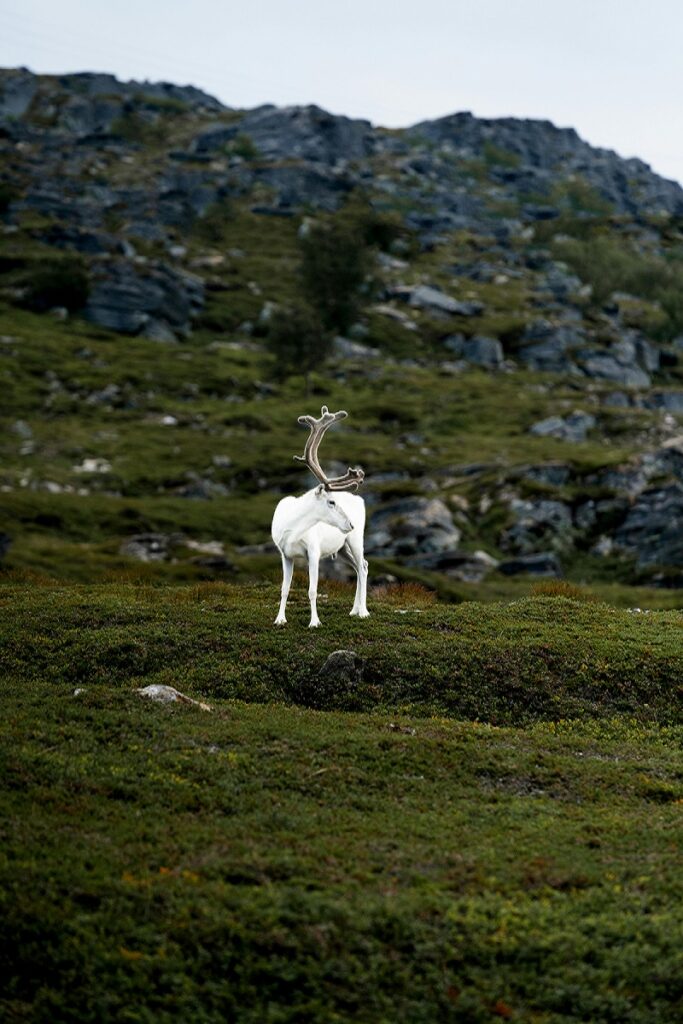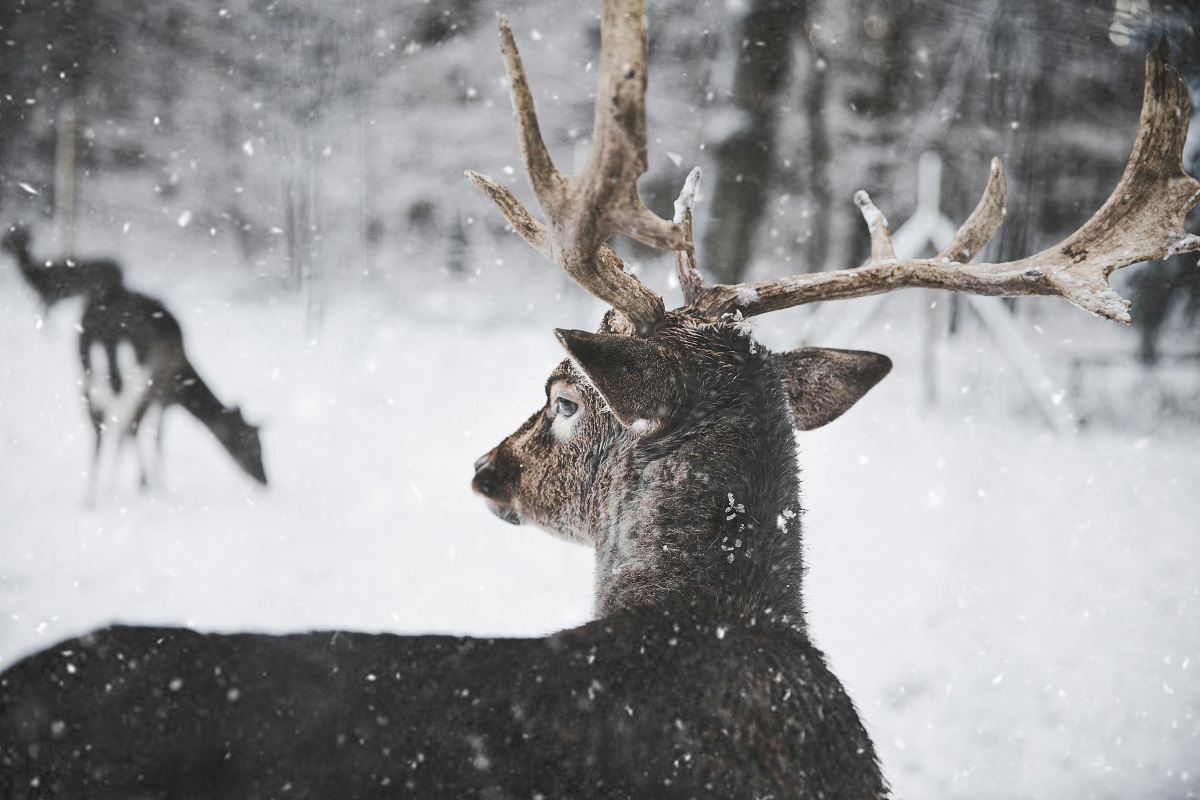Reindeer, also known as caribou in North America, are fascinating animals that inhabit the cold regions of the Northern Hemisphere. These majestic creatures are well adapted to survive in harsh environments, from icy tundras to dense forests. They are famous for their role in holiday traditions, but their real-life abilities and behaviors are just as impressive.
Physical Characteristics

| Feature | Details |
|---|---|
| Scientific Name | Rangifer tarandus |
| Common Name | Reindeer (Caribou in North America) |
| Class | Mammalia |
| Order | Artiodactyla |
| Family | Cervidae |
| Genus | Rangifer |
| Size | 4 to 7 feet (1.2 to 2.1 meters) long |
| Weight | 180 to 400 lbs (80 to 180 kg) |
| Lifespan | 10 to 15 years (wild), up to 20 years (captivity) |
| Habitat | Arctic, tundra, boreal forests |
| Distribution | North America, Europe, Asia, Greenland |
| Diet | Herbivorous (lichens, grasses, mosses, shrubs) |
| Behavior | Social, migratory, herd-living |
| Predators | Wolves, bears, lynxes, humans |
| Conservation Status | Varies by region (Least Concern to Vulnerable) |
| Unique Traits | Both males and females grow antlers, well-adapted for cold climates |
One of their most remarkable features is their antlers. Unlike most deer species, both males and females grow antlers. Males use their antlers to fight for dominance, while females use them to protect food sources during winter. Their hooves are specially designed to walk on snow and ice. In summer, they are soft and spongy for better traction, and in winter, they become hard and sharp, making it easier to walk on ice and dig for food.
Habitat and Distribution
Reindeer are found in the Arctic and subarctic regions of North America, Europe, and Asia. Their habitats include tundras, boreal forests, and mountainous areas. They are highly migratory animals, traveling long distances in search of food. Some herds migrate over 3,000 miles (4,800 km) per year, making them one of the most well-traveled land mammals on Earth.
Diet and Feeding Habits
Reindeer are herbivores, meaning they eat only plants—their diet changes with the seasons. In the summer, they graze on grasses, leaves, and mushrooms. In the winter, when food is scarce, they rely on lichen, also called “reindeer moss,” which they dig up from beneath the snow. Their sense of smell helps them locate food hidden under thick snow layers.
Behavior and Social Structure
Reindeer are social animals and live in herds, which can range from a few dozen to thousands of individuals. During migration, they often gather in massive groups, protecting from predators. They communicate using grunts and snorts, and their excellent hearing helps them detect danger from a distance.
Reproduction and Life Cycle
Reindeer mate in the fall during a period called the rut. Males compete for females by locking antlers and pushing against each other. After mating, the female carries the baby, called a calf, for about 230 days. Calves are born in late spring or early summer and can stand and walk within an hour of birth. This quick development is crucial for their survival in the wild.
Interesting Facts About Reindeer
Reindeer are the only deer species in which both males and females grow antlers.
Their noses warm up cold air before it reaches their lungs, helping them survive in freezing temperatures.
They can see ultraviolet light, which helps them spot predators and food in snowy landscapes.
Some reindeer populations migrate farther than any other land mammal.
They have been domesticated for over 2,000 years and are still used for transport in Arctic regions.
FAQs
What is the difference between a reindeer and a caribou?
Reindeer and caribou are the same species (Rangifer tarandus), but they have different names based on location. In North America, wild reindeer are called caribou, while domesticated ones are referred to as reindeer.
Why do reindeer have antlers?
Both male and female grow antlers, which is unique among deer species. They use them for defense, digging through snow for food, and establishing dominance within their herd.
How do reindeer survive in cold climates?
They have thick fur, a fat layer for insulation, and special blood circulation in their legs to prevent freezing. Their hooves also adapt to seasonal changes, becoming hard in winter for walking on ice and soft in summer for gripping wet ground.
Do reindeer migrate?
Yes, they are highly migratory and travel long distances (up to 3,000 miles per year) in search of food. Their migration patterns depend on the availability of food and changing seasons.
Are reindeer endangered?
The conservation status of reindeer varies by region. Some populations are stable, while others are declining due to habitat loss, climate change, and hunting. Certain subspecies are classified as vulnerable or near threatened.
Discover the Majestic Shire Horse: Gentle Giants of the Equine World
Conclusion
They are extraordinary creatures that have adapted to some of the most extreme environments on Earth. Their strength, endurance, and ability to survive in the cold make them a symbol of resilience. Whether in the wild, in folklore, or as domesticated animals, reindeer continue to play an important role in ecosystems and human cultures around the world.

